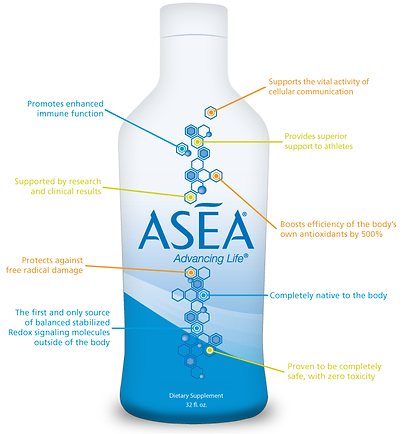Suggested Aftercare Guidelines
Cleaning Solutions
We recommend only two cleaning solutions:
- Asea which is a Hyper Healer
- Saline Solution which is a Wound Wash
CLEANING INSTRUCTIONS
FOR BODY PIERCINGS
-WASH your hands thoroughly prior to cleaning or touching your piercing for any reason.
- Fill a shot glass about 1/4 full with your Asea or Saline solution
- Pop that into the microwave for 4-6 seconds
- Cut a piece of Sterile Gauze and dip into solution
- Place that on your healing piercing and leave it soaking in for 10-15min (DO NOT scrub
or wash the piercing, just gently place gauze on)
- Feel free to re-warm the solution and drip it onto the gauze during the soak
- After the 10-15min, hop in the shower and allow the water to gently wash it away.
WHAT IS NORMAL?
• Initially: some bleeding, localized swelling, tenderness, or bruising.
• During healing: some discoloration, itching, secretion of a whitish-yellow fluid (not pus) that will form some crust on the jewelry. The tissue may tighten around the jewelry as it heals.
• Once healed: the jewelry may not move freely in the piercing; do not force it. If you fail to include cleaning your piercing as part of your daily hygiene routine, normal but smelly bodily secretions may accumulate.
• A piercing may seem healed before the healing process is complete. This is because tissue heals from the outside in, and although it feels fine, the interior remains fragile. Be patient, and keep cleaning throughout the entire healing period.
• Even healed piercings can shrink or close in minutes after having been there for years! This varies from person to person; if you like your piercing, keep jewelry in—do not leave it empty.
WHAT TO DO
• Wash your hands prior to touching the piercing; leave it alone except when cleaning. During healing, it is not necessary to rotate your jewelry or pick at.
• Stay healthy; the healthier your lifestyle, the easier it will be for your piercing to heal. Get enough sleep and eat a nutritious diet. Exercise during healing is fine; listen to your body.
• Make sure your bedding is washed and changed regularly. Wear clean, comfortable, breathable clothing that protects your piercing while you are sleeping.
• Showers tend to be safer than taking baths, as bathtubs can harbor bacteria. If you bathe in a tub, clean it well before each use and rinse off your piercing when you get out.
WHAT TO AVOID
• Avoid cleaning with Betadine®, Hibiciens®, alcohol, hydrogen peroxide, Dial® or other harsh soaps, as these can damage cells. Also, avoid ointments as they prevent necessary air circulation.
• Avoid Q-tips, the cotton fibers can get wrapped around the jewelry or even be pulled into the piercing.
• Avoid Bactine®, pierced ear care solutions and other products containing Benzalkonium Chloride (BZK). These can be irritating and are not intended for long term wound care.
• Avoid over-cleaning. This can delay your healing and irritate your piercing.
• Avoid undue trauma such as friction from clothing, excessive motion of the area, playing with the jewelry, and vigorous cleaning. These activities can cause the formation of unsightly and uncomfortable scar tissue, migration, prolonged healing, and other complications.
• Avoid all oral contact, rough play, and contact with others' bodily fluids on or near your piercing during healing.
• Avoid stress and recreational drug use, including excessive caffeine, nicotine, and alcohol.
• Avoid submerging the piercing in unhygienic bodies of water such as lakes, pools, hot tubs, etc. Or, protect your piercing using a waterproof wound-sealant bandage (such as 3M™ Nexcare™ Clean Seals). These are available at most drugstores.
• Avoid all beauty and personal care products on or around the piercing including cosmetics, lotions, and sprays, etc.
HINTS AND TIPS
JEWELRY:
• Unless there is a problem with the size, style, or material of the initial jewelry, leave it in the place for the entire healing period. See your qualified piercer to perform any jewelry change that becomes necessary during healing.
• Contact your piercer if your jewelry must be removed (such as for a medical procedure). There are non-metallic jewelry alternatives available.
• Leave jewelry in at all times. Even old or well-healed piercing can shrink or close in minutes even after having been there for years. If removed, re-insertion can be difficult or impossible.
• With clean hands or paper product, be sure to regularly check threaded ends on your jewelry for tightness. ("Righty-tighty, lefty-loosey.")
• Carry a clean spare ball in case of loss or breakage.
• Should you decide you no longer want the piercing, simply remove the jewelry (or have a professional piercer remove it) and continue cleaning the piercing until the hole closes. In most cases, only a small mark will remain.
• In the event an infection is suspected, quality jewelry or an inert alternative should be left in place to allow for drainage or the infection. If the jewelry is removed, the surface cells can close up, which can seal the infection inside the piercing channel and result in an abscess. Do not remove jewelry unless instructed to by a medical professional.
** There's no such thing as a stupid question if anything comes up please contact us, we want to ensure your piercing is happy, healthy & healing**
